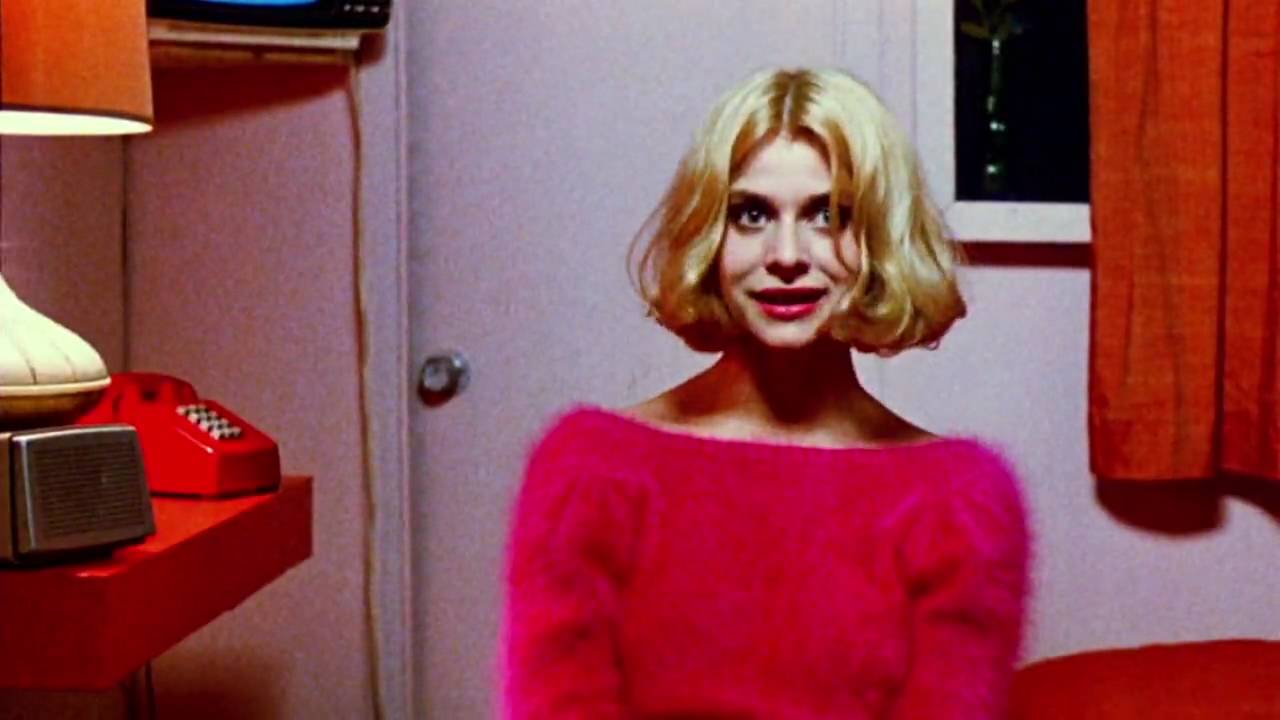
Paris, Texas (1984; Wim Wenders)
GRADE: B+
By Daniel Barnes
These festivals are all about reducing my cinematic blind spots, so it is without (much) shame that I admit that Paris, Texas is the first non-documentary film I’ve seen by director Wim Wenders. That said, from my general knowledge of Wenders and my limited experience with Wenders-directed docs (I’ve seen Buena Vista Social Club and The Salt of the Earth), and now this 1984 Palme d’Or winner, it’s clear that there’s a strong cultural anthropologist angle to his work. In the bemusedly bleak Paris, Texas, Wenders articulates his slightly romanticized “outsider’s” idea of the lonely American west, a place of spiritual emptiness and surreal beauty.
Wenders has as much detached affection for the apocalyptic barker on the freeway overpass as he does for the neon-lit lanes of Route 66, or for Ry Cooder’s Tex-Mex score. The film opens in a conspicuously Monument Valley-esque portion of the Mexican border, as a mute man in a red baseball cap (Harry Dean Stanton) stumbles through the desert in search of water, and Wenders and his cinematographer Robby Muller make great use of the vast, low Texas skies in these scenes. Later, the film moves to Los Angeles, with the skyline now an endless, looping junction of freeways, but through Wenders’ eyes, it’s just as beautiful and forbidding.
The story outline of Paris, Texas is fairly simple – Travis gets collected by his younger brother (Dean Stockwell) and reunited with his seven-year-old son, then takes the kid to Houston to find his estranged mother (a drawling Nastassja Kinski) – but the atmosphere is all that matters. Wenders doesn’t have a particularly ostentatious style, but there is something dreamy and unreal about the way he lingers over the cinderblock hotel rooms, the chipped orange plastic of truck stop restaurant booths, the neon clutter of roadside signage, and the incessant hum of the freeway. He finds desolation not just in the desert, but in the new-growth trees of the L.A. suburbs, and in the cold, grey metropolis of Houston.
After a first half that concentrates largely on the relationship between Travis and Walter, Stockwell completely drops out of the second half, fluttering away like one of Travis’ bitter memories. Travis locates his wife in Houston, where she works in the fantasy booths at what appears to be a hybrid strip club/punk rock practice space (John Lurie plays the club manager, so there you go). The customers view her through a one-way mirror, with the booths cheaply decorated to fit utterly unsexy themes like “Hotel” and “Coffee Shop”. That’s funny and depressing all on its own, but then you see the view from her side of the mirror, the connecting wall filled with uncovered fiberglass installation, and it’s a kick in the gut.
Kinski doesn’t really show up until late in the third act, but the nearly half-hour-long “confessional” scene between her and Stanton is a masterwork, the best thing I’ve ever seen either of them do. Stanton is amazing throughout, haunted by the past but touching at his emotional wounds with the sensitivity of a child. Not all of Wenders’ attempts at emotional connection work, though – the boy is a precocious moppet straight out of a soda commercial, and things get cutesy even when the kid’s not around, as in the scene where a Mexican maid teaches Travis how to “dress like a father.” But I loved traveling the roads of Wenders’ America, a restless country where deliverance is an empty lot in the middle of nowhere, and where authenticity itself feels strange and unnatural.
Read more of Daniel’s reviews at Dare Daniel and Rotten Tomatoes, and listen to Daniel on the Dare Daniel podcast.
Categories: ESFS Festivals

